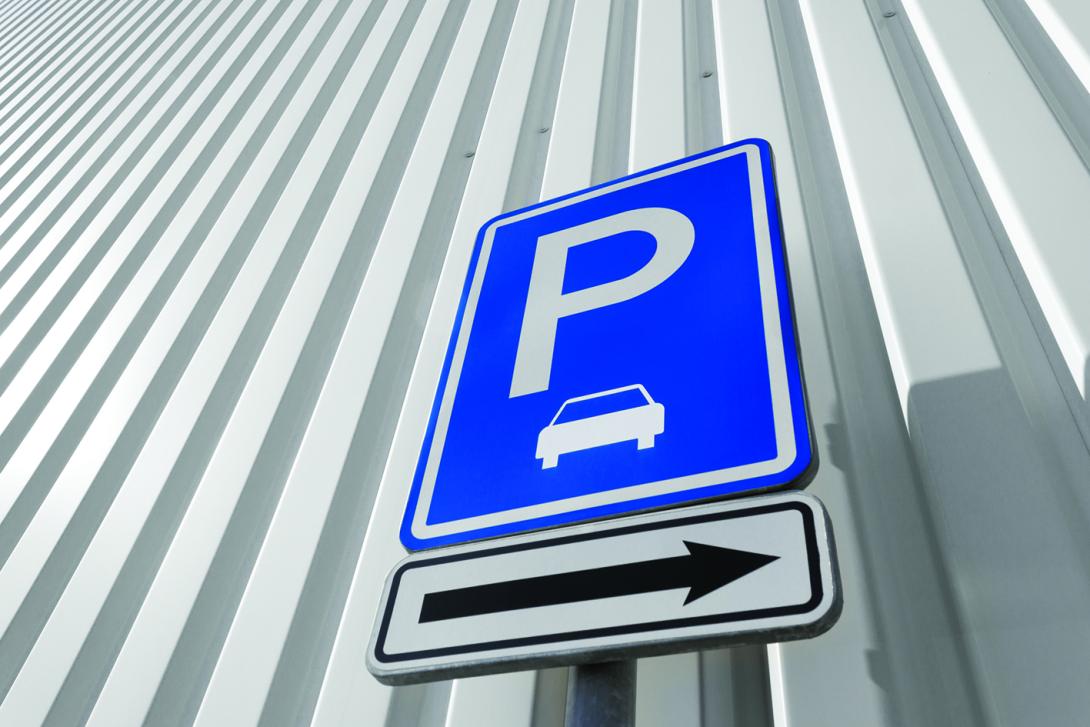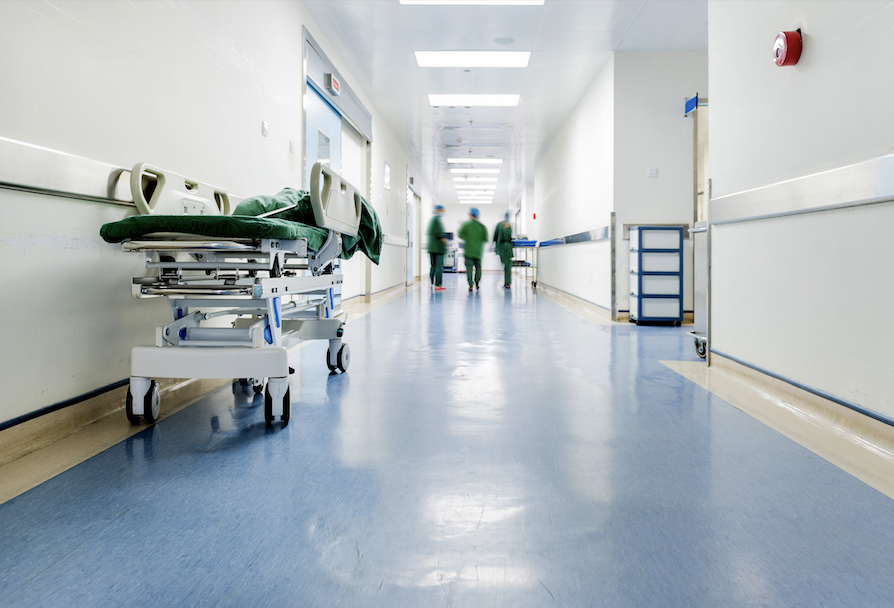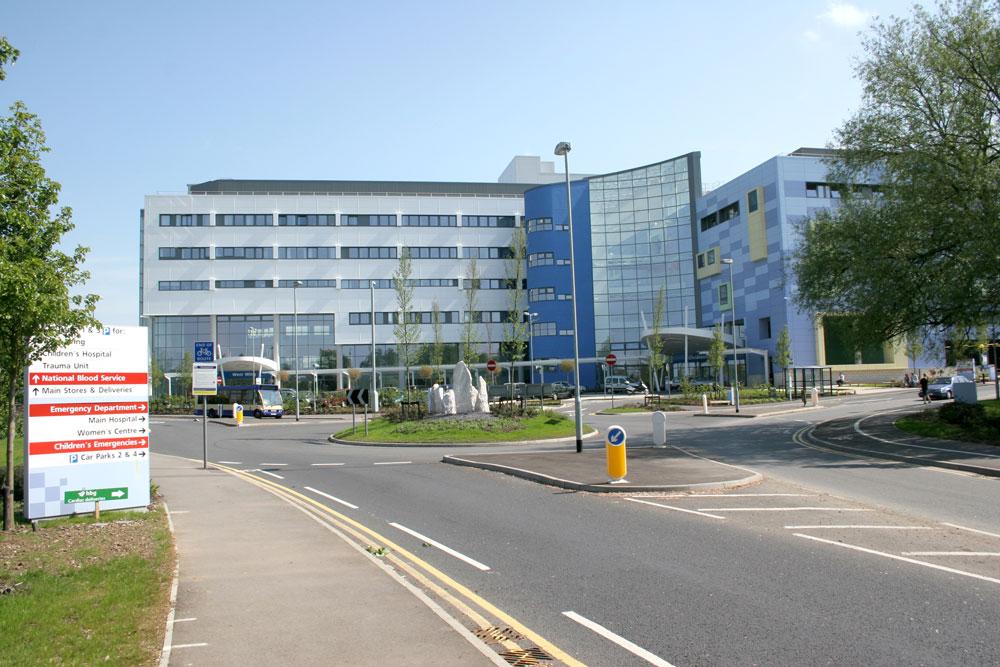In our first Health Business Panel of Experts we are joined by representatives from National Car Parks, Smart Parking, Debt Recovery Plus and WPS Parking to discuss the current state of parking on NHS sites
The government has recently announced a new project, to be led by the British Parking Association (BPA), which will create and deliver new world-leading national parking data standards, set to revolutionise the way drivers find, book and pay for parking. Set to increase parking accessibility to places across the country, notably town centres and the high street, the move has been dubbed as having the potential to transform the way we drive and park, just as the Oyster card transformed the way we travel in London.
The ambition is for all parking data released by local councils and companies across the country to use the same language, with the development of parking apps and smarter connected vehicles on our roads meaning that data could identify available parking spaces, permitted times and price. This could have an important knock-on effect for hospital parking. Good quality, well designed and properly maintained parking provision is vital to the success of Britain’s hospitals and healthcare facilities through the setting and raising of standards.
Parking at hospitals and healthcare services is always going to be a soft target for the media to tell a good story about how not to do it. However, the BPA believes that providing, managing and charging for parking at healthcare facilities needs to be seen in the context of delivering a better and fairer service to users. So given the limited funds and resources of the public sector, what are the arguments for spending tight budgets on parking?
Income streams
Lee Holland, of NCP, stresses that car parking revenue provides an ever-important income stream, helping to support the main hospital functions as well as giving NHS trusts the ability to develop new facilities. This is becoming increasingly important as hospitals increase their individual specialisms.
What’s more, providing the optimum quality and quantity of parking can bring additional benefits. Not only does it provide a better experience for patients, visitors and staff during what may be an already-stressful time, but it also helps reduce late or missed appointments which goes some way in helping to further reduce overall costs to the trust.
Debt Recovery Plus’ Stewart Clure agrees, and says that whilst free parking for patients would be welcome in an ‘ideal world’, unfortunately the revenue generated from parking on NHS sites helps to support other NHS services. In terms of spending on budgets, Stewart says that there is a noticeable distinction between those hospitals which have considered the benefits of a technology driven approach to parking as opposed to a site which hasn’t. In fact, where a hospital has considered ANPR, pay by phone and parking sensor technology along with the many other various tech solutions in the market, there is a clear improvement to the site. Traffic flow issues are reduced, spaces are frequently available, revenue has grown and importantly complaints from users have fallen.
While acknowledging that parking revenues are extremely important to hospitals to fund parking facilities and ensure that limited funds are not being diverted from other vital services, Simon Jarvis, managing director of WPS, says that there are alternatives to fine-based parking, most notably pay-on-foot systems, that mitigate potential frustration, such as if someone is delayed because of events outside of their control, often the late-running of an appointment. This is where the NHS can balance the need for returns and support well targeted services.
Intelligent pay-on-foot systems that have been properly thought through for the specific site deliver a number of advantages, providing a much fairer system for the patient or visitor, as well as the necessary financial returns to the hospital. Simon says that the challenge is enormous. The Welsh and Scottish governments have both already banned paid-for hospital parking as a result of pressure from those who feel the systems are unfair. If hospitals in the rest of the United Kingdom do not invest wisely in systems that are seen to be fair and do not exploit patients/visitors and indeed staff, there is a very real risk that England and Northern Ireland may follow the Welsh and Scottish example. This would have a significantly negative impact on budgets going forward.

Demand versus supply
The other issue that usually crops up when discussing hospital parking, aside from charges, is that of demand outstripping supply. However, there are a number of opportunities that have been implemented which effectively improve the parking experience at hospitals. These include Park & Ride facilities set up for staff to create more parking for patients and visitors, as seen at the Royal Victoria Infirmary in Newcastle, through to working with local authorities to create a travel plan that provides an efficient service to users. The increasing use of technology in the sector is also proving to be hugely beneficial. With users able to pre-book their parking space, for example, there is no longer the stress or frustration of being unable to park when needed and the parking estate has the additional benefit of being able to directly contact customers and promote alternative parking facilities.
But how can parking facilities and transport links around hospitals be better managed to provide a better experience for all? Hospital management teams often see issues arising from parking at NHS sites where users are not paying for the correct length of stay, staff are parking without displaying permits and users are parking in restricted areas because there aren’t any available spaces on site. Unfortunately, there will always be a level of parking abuse which will remain regardless of which type of parking management is in place.
The main type of abuse which can be controlled and reduced is that of the persistent offender and the commuter abuse. Persistent offenders are typically staff, residents, visitors – anybody which feels that they can ‘get away with parking for free’. These offenders fall into a category where some levels of offenders can have 10, 20, sometimes more than 100 offences – with no retribution. In these cases, the persistent offender needs to be issued with litigation papers which will help to stop the persistent abuse at site. Through working closely with the parking operators, NHS teams can identify their level of abuse, look at the category of abuse and work together to plan an effective management parking programme on the site which will help to reduce the number of issues raised from demand outstripping supply at each site. Key to a fair system is information and data. It is possible nowadays to link real-time information on car park usage not only to digital car park signs, but also to hospital websites and apps. If the user is able to see that a car park is extremely busy prior to making their journey this allows them to consider alternative travel arrangements.
All of which raises the ongoing issue of improving the patient experience. By and large, there has been positive investment that has improved the state and maintenance of hospital parking. There are however still some hospitals that are opting for low-cost, poor-quality parking solutions which deliver an unreliable customer experience, not just for patients and visitors, but also with the staff who are at the front line of the frustrations expressed by car park users. Simon Jarvis says that good procurement practice is essential in this respect and we all too often see tenders which value price significantly above performance and customer experience.
The quality of the car parking estate across the NHS varies dramatically from trust to trust. Some have large expanses of surface car parks in various states of repair while others have invested in new, high-quality parking facilities for the benefit of both staff and visitors to the hospital. That being said, there is not one solution for all hospitals.
Lee Holland says that the needs, opportunities and challenges vary from one hospital to the next which is why NCP always works closely with its partners to create a solution for their specific requirements. The car park is of course an important part of someone’s experience at a hospital, often being both the first and last part of someone’s interaction and so there’s value in investing in it. While the extent of this investment can vary, Lee believes that a place where users can easily find a space and feel the tariff provides value for money, as well as a space that is safe, clean and easily accessible is fundamental.
DRP has also worked with clients on a mix of NHS sites over the last 10 years, during which Stewart Clure has seen more and more NHS sites work with the automation of enforcement and the addition of an on site ‘team’ to help resolve first-hand problems. As expected with most new technology, this sometimes results in cases where patients cannot understand the new system or are simply unaware of any changes to the old set up. An ‘on-site’ team can help to reduce any conflict and answering any questions which may lead from mis-interpretation of a new parking management programme.
Therefore, it is vitally important that when any NHS site is considering introducing new IT solutions to their site or simply changing the way that visitors need to pay, that they inform the visitors and staff in advance through a structured information marketing campaign around the hospital. Stewart also indicates parking scenarios where some of the money raised from enforcement or perhaps pay by phone revenue is offset to help towards improvements on the structure of the site and towards daily maintenance.

Going green
According to the British Parking Association, approximately two thirds of the half million parking spaces across the NHS in England are used by staff, which means up to 300,000 staff use their car to get to work. So, if drivers were offered alternative modes of transport and encouraged not to use their cars or car share, this could have a significant impact on reducing nitrogen dioxide levels. In particular, it is diesel cars (42 per cent) and vans (33 per cent) that emit the most nitrogen dioxide.
Health Business Awards short-lister for the Transport and Logistics Award, Western Sussex Hospitals NHS Foundation Trust were recognised for introducing their comprehensive green staff travel plan. A staff travel survey revealed that 64 per cent of their 7,000 staff across their three hospitals; Worthing, Chichester and Southlands, drive on their own. The challenge was to encourage them to travel differently. The waiting list for parking permits had been closed to new applicants for over five years. Something needed to be done. An over-allocation of staff permits meant that five years ago it was not uncommon to see staff waiting in the car park for a space, as four permits were issued for every-one space. Now only 1.8 permits per space are allocated.
The trust took the decision that providing green alternative travel options was a priority, especially with a predicted staff increase and a reduction in parking spaces over the next five years. A full survey identified where staff travelled from (a heat map revealed the popular journeys) and the willingness of staff to switch from their car if alternative modes of transport were on offer. For example, some said they were able to switch but not willing. It was going to be difficult to predict just how staff would change their travel mode until it was actually on offer, and importantly encouraged to give it a go.
Three working groups were set up; green initiatives (cycling, motorcycling, walking, public transport), alternate parking (cross site minibus, Park & Ride) and on-site parking (permit usage, car share). The trust did not take the easy route and tackle on-site parking first, they set their sights on improving off-site parking and created not one but two Park & Ride car parks outside of the main hospital sites.
They installed secure parking for staff cycles and motorcycles with improvements to changing and even drying facilities and lockers. They even signed up to the discount travel company Easit which gives a 15 per cent discount on public transport to all staff who also join the scheme.
Leading the way
As mentioned previously, off-site parking facilities, such as Park & Ride that reduce city centre driving, and car sharing schemes, are key to supporting green initiatives and reducing carbon emissions. Within all car parks, electric vehicle charging points are also becoming increasingly important in facilitating the government’s drive in going electric. At present, the cost of electric charging is covered by the hospital, but this is something that may need to be re-considered when more vehicles require the service.
Lee Holland goes on step further by saying that the parking industry is leading the way in green travel, investing resources in research into and implementing new solutions. NCP has been installing electric vehicle charging points for 15 years but Lee knows that the industry needs to continue to look forward and plan future changes in consumer travel patterns. For NHS trusts, therefore, there is a real opportunity to embrace change by working with parking providers and utilising their expertise in the area. Car sharing, Park & Ride schemes and cycle hubs within car parks are examples of how this can be done, but it is equally important to have green travel at the heart of the car park design.
The benefit of working with parking operators is that we do this by nature so, as an example, can advise on reducing the amount of time a customer needs to spend driving around trying to find an available space, or the exit, thus helping to reduce unnecessary emissions.
More and more sites are pushing the EV charging bays, with NHS sites starting to consider the positive effective this can have with visitors. We have also seen a rise in the share a space drive to work campaigns for staff. An initiative which started out at one hospital as an effort by a department to help to reduce the impact of their vehicles on the environment when driving to work each day quickly turned into an approach which was rewarded by the hospital itself when it implemented the car share initiative throughout the site. The hospital was able to free up 20 per cent of staff parking and introduce this to pay and display visitor parking which helped to reduce visitor parking issues and generate extra revenue towards the day to day maintenance of the site.
Travel plans are a great idea in theory. However, as Stewart Clure stresses, the cost to implement and maintain are a cause for concern and possibly a reason why it hasn’t taken off in the NHS.
Debt collection for parking
Returning again to the topic of technology in parking, reviewing NHS portfolios for debt recovery shows a significant difference in the recovery rates on a site which has implemented an efficient, tech driven model to one that has not developed the site and as such their recovery rates have stagnated.
The use of debt collection is, quite rightly, viewed as highly sensitive by both the NHS and providers, such as Debt Recovery Plus. Fraser Richards says that, whilst the use of a specialist debt collection agency offers significant benefits, the management of this facility, especially within the health environment, requires careful management. That said, this facility will, over the course of a protracted period, offer a revenue stream that should not be ignored, especially as it is designed to address offenders that have abused NHS facilities. In order for this facet of the car parking management offering to be successful, it is absolutely necessary that the communications between the respective parties are open, honest and totally transparent. Following this, says Richards, this revenue stream becomes a vital part of keeping monies flowing throughout the process.
Debt Collection within the parking industry is a necessity which helps to ensure that any offenders who don’t pay are accountable. There are various ways to identify and recover on unpaid debts, but it is through close working relationships between the NHS management team and the parking operator which helps to identify cases and decide on appropriate recovery action to take against troublesome offenders.
Through the debt recovery of unpaid charges, we can help the NHS sites to increase their parking charge revenue by approximately 20 per cent, which can then be used to maintain and effectively manage the day to aspects of NHS parking.
Our panellists
Fraser Richards, Smart Parking

Fraser joined Smart Parking in 2014. An exceptional cross-party communicator and strategic thinker, he was promoted to National Accounts and Client Services Director in May of 2018. Prior to joining Smart Parking, Fraser spent over three decades in the Royal Navy, which saw him hone his strategic analytical experience. Possessing two Masters’ Degrees, he is used to working under pressure and supports the necessity for open communication.
Stewart Clure, Debt Recovery Plus

Stewart joined Debt Recovery Plus in 2015, having previously spent five years working in the private parking sector. Through his experience of working with clients on retail, commercial, NHS and various other sites, Stewart was able to bring his knowledge of the industry to DRP. Since graduating from Leeds University with a 2:1 in Maths, Stewart worked on the Barclays Graduate Scheme before ending up at Savills.
Lee Holland, National Car Parks

Lee joined NCP as the Property Director in 2009, taking commercial, technical and strategic responsibility for the Property Portfolio, which includes new site acquisition, property development, construction and maintenance. He joined NCP after 24 years with major UK Utilities where he undertook a number of different senior roles.
Simon Jarvis, WPS

Simon Jarvis is the UK Managing Director for WPS, a global leader in parking systems for over 25 years, with a long-held reputation for engineering excellence and providing the industry’s most reliable solutions. It is part of Dynniq, a dynamic, high-tech and innovative company with a comprehensive knowledge of managing mobility, parking and energy using advanced systems engineering.





